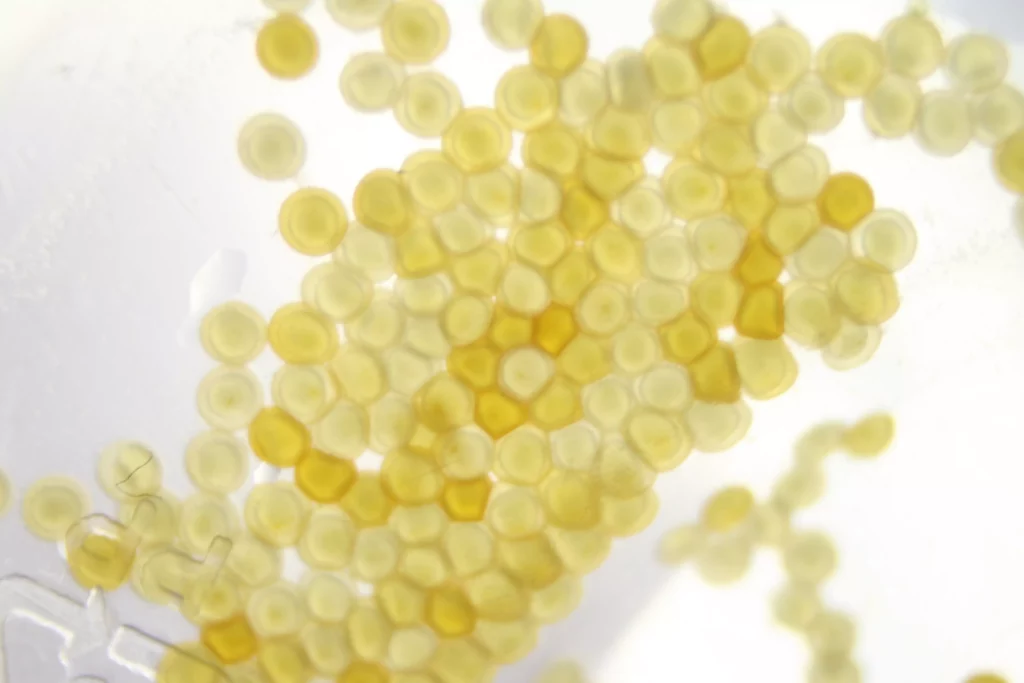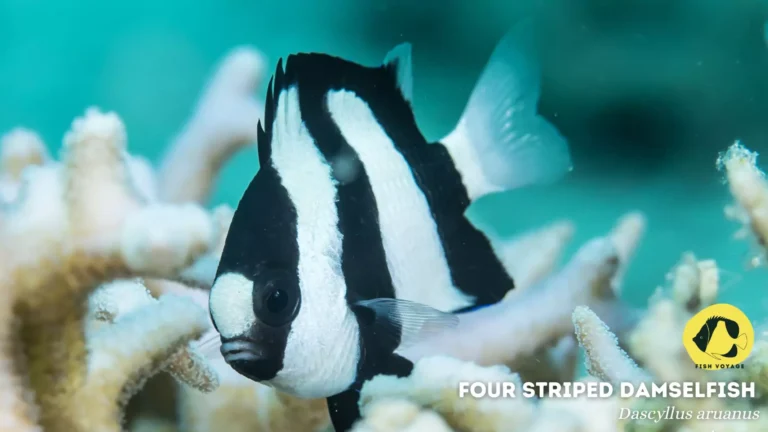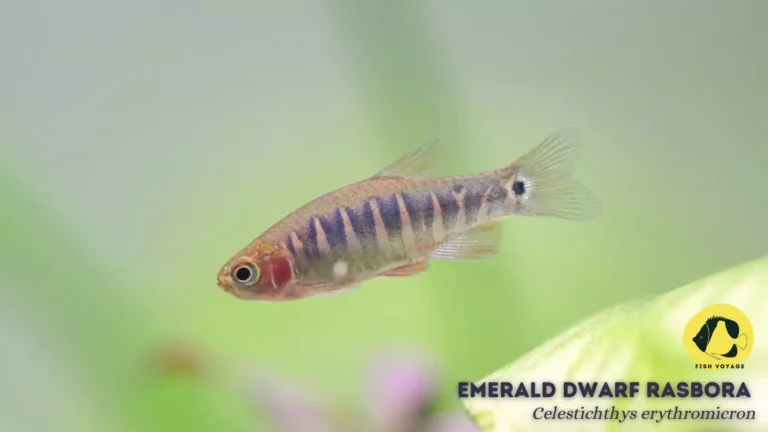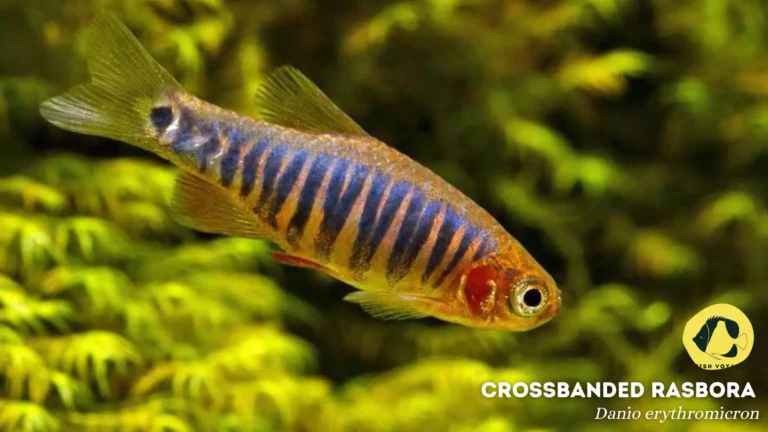What Do Unfertilized Goldfish Eggs Look Like?

In the intricate tapestry of goldfish care, understanding the nuances of reproduction is a vital thread that every responsible owner should weave into their knowledge. As stewards of these aquatic companions, delving into the specifics of goldfish reproduction, particularly the characteristics of fertilized and unfertilized eggs, holds paramount importance. Beyond the fascination of witnessing the life cycle unfold within an aquarium, this knowledge equips goldfish enthusiasts with the tools to ensure the well-being of their finned friends. Join me on this exploration as we unravel the mystery behind what unfertilized goldfish eggs look like, shedding light on a crucial aspect of goldfish care often overlooked. Let’s embark on a journey into the world of goldfish reproduction and unveil the secrets that lie beneath the surface of their aquatic habitat.
Goldfish Reproduction Basics
Overview of Goldfish Reproduction
Goldfish reproduction is a fascinating dance of nature, governed by intricate biological processes. Triggered by environmental cues, the reproductive cycle of goldfish is a spectacle that captivates the attention of dedicated aquarists.
Roles of Male and Female Goldfish
In this delicate ballet, male goldfish play the role of pursuers, actively chasing females to initiate the spawning process. Females, on the other hand, release eggs into the water, providing the canvas for the upcoming aquatic masterpiece.
Significance of Eggs in the Reproduction Cycle
The significance of eggs in the goldfish reproduction cycle cannot be overstated. These tiny orbs hold the promise of new life, encapsulating the potential for the next generation of goldfish. Recognizing the characteristics of these eggs is essential for caretakers, ensuring they can provide optimal conditions for successful reproduction.
Embarking on a journey through the fundamentals of goldfish reproduction unveils the poetry of nature in your aquarium. Understanding the roles of male and female goldfish and appreciating the significance of eggs sets the stage for a deeper connection with these aquatic companions. Join me as we unravel more layers of this captivating narrative.
Identifying Fertilized vs. Unfertilized Eggs
Differences Between Fertilized and Unfertilized Eggs
Understanding the disparities between fertilized and unfertilized goldfish eggs is akin to deciphering a subtle language written on the aquatic canvas. Fertilized eggs, infused with life, exhibit distinct characteristics that set them apart from their unfertilized counterparts.

Visual Cues of Fertilization
- Color Palette: Fertilized eggs often boast a translucent appearance, showcasing a subtle amber hue. In contrast, unfertilized eggs tend to remain opaque and may lack the golden glow indicative of the spark of life.
- Clarity and Texture: Fertilized eggs generally maintain a clear and smooth texture, signaling the presence of a developing embryo within. Unfertilized eggs, however, may appear cloudy or granular, lacking the internal structure indicative of successful fertilization.
- Adherence to Substrate: Fertilized eggs typically adhere to surfaces, such as plants or rocks, thanks to a natural adhesive produced by the female goldfish. Unfertilized eggs, lacking this adhesive quality, may be scattered loosely in the water.

Deciphering the visual cues of fertilization is a skill that elevates the goldfish enthusiast to the role of a keen observer in the intricate ballet of reproduction. By recognizing these subtle nuances, aquarists can gain invaluable insights into the success of the reproductive process, ensuring the thriving continuation of their aquatic companions. Join me as we delve deeper into the mesmerizing world of goldfish reproduction, where every visual cue tells a story of life and potential.
Appearance of Unfertilized Goldfish Eggs
Color Palette of Unfertilized Eggs
Unfertilized goldfish eggs, lacking the vital spark of life, often present a muted color palette. Instead of the subtle amber glow observed in fertilized eggs, unfertilized counterparts tend to maintain an opaque and paler appearance. This distinction in coloration serves as a visual indicator of the absence of ongoing development.
Size Disparities
Size becomes a discerning factor when inspecting goldfish eggs. Unfertilized eggs are typically smaller than their fertilized counterparts. This subtle variation in size reflects the absence of embryonic growth within the egg, reinforcing the importance of size as a distinguishing characteristic.
Texture Clues
The texture of unfertilized goldfish eggs is another key point of differentiation. Unlike the clear and smooth texture associated with fertilized eggs, unfertilized eggs may appear cloudy or granular. This lack of defined structure points to the absence of the intricate developments taking place within a fertilized egg.
Visual Aid: Images and Diagrams
To facilitate a clearer understanding, consider referring to accompanying images or diagrams illustrating the contrasting features of fertilized and unfertilized goldfish eggs. Visual aids provide a tangible reference, enhancing the learning experience for enthusiasts seeking to master the art of egg identification.
Understanding the nuanced appearance of unfertilized goldfish eggs is a skill that transforms caretakers into custodians of life’s delicate balance within the aquarium. By delving into these visual intricacies, aquarists embark on a journey of heightened observation, enriching their connection with the aquatic world. Join me as we unravel more layers of this captivating narrative, where each detail speaks volumes about the ongoing symphony of nature.
Reasons for Unfertilized Eggs
Environmental Factors and Improper Conditions
- Inadequate Water Parameters: Unfertilized goldfish eggs often result from suboptimal water conditions, including imbalances in pH levels, temperature fluctuations, or insufficient oxygen. Maintaining a stable and suitable aquatic environment is paramount for successful reproduction.
- Inadequate Substrate for Adhesion: If the chosen breeding substrate lacks the necessary texture or surface area for proper egg adhesion, unfertilized eggs may result. Providing a substrate that accommodates the natural adhesive properties of goldfish eggs enhances the likelihood of successful fertilization.
Health Issues Impacting Reproduction
- Nutritional Deficiencies: Poor nutrition can contribute to reproductive challenges in goldfish. Ensuring a well-balanced diet that includes essential nutrients, particularly during the breeding season, supports the overall health and fertility of goldfish.
- Disease and Stress: Health issues or stress, whether due to overcrowding or sudden changes in the environment, can hinder the natural reproductive instincts of goldfish. Maintaining a stress-free environment is crucial for fostering successful breeding.
Breeding Challenges and Compatibility
- Mismatched Pairs: Unfertilized eggs may result from incompatible breeding pairs. Selecting fish with similar sizes, ages, and compatible temperaments promotes a harmonious breeding environment and increases the likelihood of successful fertilization.
- Inexperienced Breeders: Novice goldfish breeders may encounter challenges in achieving successful fertilization. Providing a conducive breeding environment and observing the natural behaviors of goldfish can aid in overcoming initial hurdles.
Tips for Enhancing Breeding Success
- Optimize Water Quality: Regular water testing and maintenance ensure an environment conducive to successful goldfish reproduction. Address any issues promptly to prevent potential hindrances to fertilization.
- Selective Breeding: Thoughtful selection of breeding pairs based on compatibility and health contributes significantly to successful reproduction. Observe natural behaviors and choose pairs that exhibit compatible courtship rituals.
- Balanced Nutrition: Enhance the diet of breeding goldfish with high-quality, nutrient-rich food to support overall health and reproductive vitality.
Understanding the factors contributing to unfertilized goldfish eggs empowers aquarists to address challenges systematically. By optimizing environmental conditions, addressing health concerns, and selecting compatible breeding pairs, goldfish enthusiasts can embark on a journey toward successful reproduction within their aquatic haven. Join me as we navigate the intricate waters of goldfish care, striving for the flourishing continuation of this mesmerizing aquatic species.
Preventing Unfertilized Eggs
Optimal Breeding Conditions
- Maintain Stable Water Parameters: Regularly monitor and adjust water conditions, including temperature, pH levels, and oxygen content, to create a stable and conducive environment for goldfish reproduction.
- Provide Adequate Spawning Substrate: Ensure the availability of suitable substrates that facilitate proper adhesion of goldfish eggs. Textured surfaces, such as aquatic plants or spawning mops, offer ideal platforms for the female to deposit her eggs.
Proper Care for Breeding Goldfish
- Balanced Nutrition: Prioritize a well-rounded diet rich in essential nutrients to bolster the overall health and reproductive vigor of breeding goldfish. High-quality pellets, live foods, and supplements can contribute to optimal nutrition.
- Minimize Stress Factors: Create a stress-free environment by avoiding sudden changes in water conditions, overcrowding, or disturbances. A tranquil setting encourages natural breeding behaviors and reduces the likelihood of unfertilized eggs.
Selecting Compatible Breeding Pairs
- Observe Natural Behaviors: Spend time observing the behaviors of potential breeding pairs. Look for signs of compatibility, such as synchronized swimming, courtship rituals, and mutual interest. Choosing pairs that exhibit these behaviors enhances the chances of successful reproduction.
- Similar Sizes and Ages: Opt for breeding pairs that are of similar sizes and ages. This reduces the likelihood of dominance issues and promotes a harmonious breeding dynamic.
- Compatibility Testing: If uncertain about the compatibility of potential breeding pairs, consider a trial period in a separate tank. This allows observation of their interactions without the risk of aggression or stress.
Tips for Enhanced Breeding Success
- Provide Hiding Places: Furnish the breeding tank with ample hiding spots, such as caves or dense vegetation. This offers a sense of security for the breeding pair and increases the chances of successful egg deposition.
- Moderate Lighting: Maintain a moderate lighting schedule in the breeding tank. Mimicking natural light cycles helps regulate the reproductive hormones of goldfish, promoting a more natural breeding experience.
- Regular Monitoring: Keep a close eye on the breeding pair during the spawning period. This allows for prompt intervention in case of any issues and ensures the optimal care required for successful fertilization.
Creating an environment conducive to goldfish reproduction is both an art and a science. By implementing these preventive measures, aquarists can foster an atmosphere that not only minimizes the occurrence of unfertilized eggs but also celebrates the intricate dance of life within the aquarium. Join me as we strive for the flourishing continuation of goldfish generations, guided by the wisdom of thoughtful care and optimal breeding practices.
Conclusion
Key Points about Unfertilized Goldfish Eggs
- Unfertilized goldfish eggs serve as silent storytellers, conveying valuable insights into the delicate balance of reproduction within our aquariums.
- Recognizing the subtle differences in color, size, and texture is crucial for caretakers seeking a deeper understanding of their goldfish’s reproductive journey.
- Addressing environmental factors, health concerns, and selecting compatible breeding pairs plays a pivotal role in preventing the occurrence of unfertilized eggs.
Encouragement for Shared Experiences
Your journey into the world of goldfish care is a unique narrative, and we invite you to share your experiences. Whether you’ve triumphed over breeding challenges or have questions lingering in your aquatic exploration, your insights contribute to the collective wisdom of our community.
As we conclude this exploration into the realm of goldfish reproduction, let our shared passion for these aquatic wonders guide us toward a future teeming with life and vibrancy within our aquariums. Your dedication to understanding and nurturing these fascinating creatures is the foundation upon which the aquatic tapestry thrives. Thank you for being part of our community, and we eagerly anticipate the tales your goldfish have yet to tell.
Additional Resources
Engage in Goldfish Communities
Explore vibrant discussions on goldfish care and breeding in forums like Goldfish Keepers Forum and Fishlore. Connect with experienced enthusiasts, share insights, and seek advice.
In-Depth Books for Enthusiasts
Delve into authoritative literature to deepen your understanding. Books like “The Goldfish Guide” by Yoshiichi Matsui and “Fancy Goldfish: A Complete Guide to Care and Collecting” by Dr. Erik L. Johnson offer invaluable insights for dedicated caretakers.
Essential Products for Goldfish Care
Explore reliable products to enhance your goldfish care regimen. From high-quality fish food to efficient water testing kits, products like Hikari Goldfish Food and API Master Test Kit are trusted by aquarists worldwide.
Enrich your goldfish care journey by tapping into these diverse resources. Whether you’re seeking advice from fellow enthusiasts, immersing yourself in authoritative literature, or discovering reliable products, these points of reference are designed to empower you in your role as a dedicated goldfish steward. Thank you for entrusting us with a part of your aquatic adventure.
Frequently Asked Questions (FAQs)
1. How can I distinguish between fertilized and unfertilized goldfish eggs?
Fertilized goldfish eggs often exhibit a translucent appearance with a subtle amber hue, while unfertilized eggs tend to be opaque and paler. Additionally, the texture and adherence to surfaces offer key visual cues.
2. What factors contribute to the occurrence of unfertilized goldfish eggs?
Unfertilized eggs may result from environmental factors like inadequate water conditions, improper substrate for adhesion, nutritional deficiencies, disease, stress, or challenges with breeding pairs.
3. Are there common signs that my goldfish eggs are unfertilized?
Yes, unfertilized goldfish eggs may appear smaller, lack the characteristic amber coloration, and have a cloudy or granular texture. Observing these signs can help caretakers identify and address reproductive challenges.
4. How can I prevent unfertilized goldfish eggs in my aquarium?
Maintaining stable water parameters, providing suitable spawning substrates, ensuring proper nutrition, minimizing stress factors, and selecting compatible breeding pairs are essential steps in preventing the occurrence of unfertilized eggs.
5. What are some tips for enhancing breeding success and minimizing unfertilized eggs?
Optimize water quality, offer balanced nutrition, observe natural behaviors of potential breeding pairs, and provide adequate hiding places. These tips contribute to a conducive environment for successful goldfish reproduction.






